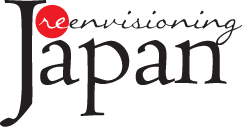Archival
- Director: United States Army Signal Corps, Army Pictorial Unit
- Country: USA
- Length: 28 min.
- Year: 1957
Video summary details: National Archives and Record Administration. Framed as an introduction to Japan for U.S military personnel seabound for service in Japan. Addresses some of the preconceptions newly arrived personnel might have before arriving in Japan. Then three military men tour Japan in a white convertible (their “magic carpet”). 16mm.
Les Kiriki Acrobates Japonais


- Director: Segundo De Chomon
- Country: France
- Length: 3 min.
- Year: 1907
Video summary details: Internet Archive. A family acrobatic troupe made to look Japanese performs what appear to be stunning feats of dexterity for the camera.They are actually being filmed from above as they perform on a black background. Trick film, silent with soundtrack. Hand-colored. Production company: S.C.A.G.L./Pathè Fréres, 35mm.
Japan as Seen from a Rickshaw


- Director: Unknown (member of the Amateur Cinema League)
- Country: USA / Japan
- Length: 19 min.
- Year: [1931-1932]
Video summary details: Courtesy of the Moving Image Department, George Eastman House International Museum of Photography and Film. Begins with a map of Japan as a pointer held by someone off camera points to the destinations on the filmmaker’s route. There are shots in the film of every location on the itinerary except for Osaka and Yokohama, and the filmmaker made at least two stops, at Ise and Kamakura, that are not included on this map. The film is divided into two parts under a general heading, “Scenes and People.” Part 1 is shot in Kansai (western Japan) and Part 2 in Kanto (eastern Japan)…
Show More
Show More
The film is structured like a journey, beginning with the filmmaker’s arrival, a segment preceded by the title “Approaching the Island.” The first shots once the filmmaker arrives in Japan (titled “A Rainy Day in Kobe”), taken from a high angle, were possibly shot from a hotel window. The rest of the film is shot outdoors on location at well-known scenic sites or on the street, with the exception of a couple of indoor sequences. There are no rickshaws in sight, but the film does include shots of the countryside taken from a train window. The film’s intertitles offer a straightforward narrative commentary on the filmmaker’s journey, simply naming a location—Water Torii at Miyajima, Theatre Street, Kobe—but occasionally reflecting knowledge gained along the way, as in “The Water Torii is a Gateway to all Shinto Temples,” or “The Komuso, A Political Outcast.” According to the titles, the itinerary is fairly predictable, bringing to mind subjects already popularized through stereoviews and postcards: for example, “Picking Tea,” “The Silkworms have been Busy,” “Hotel Fujiya and Grounds,” “The Sacred Bridge Nikko.” Nothing is predictable about the images, however, in terms of either content or style. In addition to the numerous scenes of busy streets, the camera records in turn scenic long shots, picturesque silhouette compositions, and surprisingly intimate shots of passersby, including individuals who often catch the camera’s gaze: two companions side by side, small clusters of people, families, and children—lots and lots of children, including a bevy of boy scouts standing at attention. According to its edge code, Japan as Seen from a Rickshaw was shot on 1931 reversal film stock, although the beginning and end titles and ACL logo date from one to two years later. It is possible that the final editing of the film didn’t take place until well after the filmmaker’s trip was completed. Rooftop shots of koi-nobori (carp banners) on display suggest the film was shot in the month of May (carp banners are flown for Boys day, held in May). The familiar Paramount logo that appears to be on the façade of Asakusa’s Denkikan is another clue that might help date the film. The Denki-kan was one of the movie theaters run by Shōchiku that would have been affected by a merger between Shōchiku and Paramount in early May, 1931, so the film was possibly shot at that time. Two things suggest that the individual who made this film was more than a casual filmmaker. First, the film bears the camera signature of a Bell & Howell Filmo 70, the spring-motor driven, high-end 16mm camera that made hand-held camerawork possible without an additional attachment. Second, it begins with the logo of the Amateur Cinema League, indicating that the filmmaker was a member. This connection to the Amateur Cinema League adds resonance to the filmmaker’s obvious interest in the box office activity and theater facades in Asakusa, Tokyo’s entertainment district, as well as the unexpected highlight of the film, an encounter with a “Cinema Party,” a period drama film crew on location in Arashiyama in Kyoto. 16mm.


